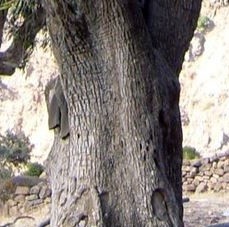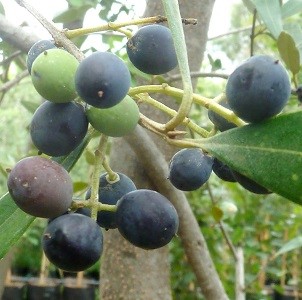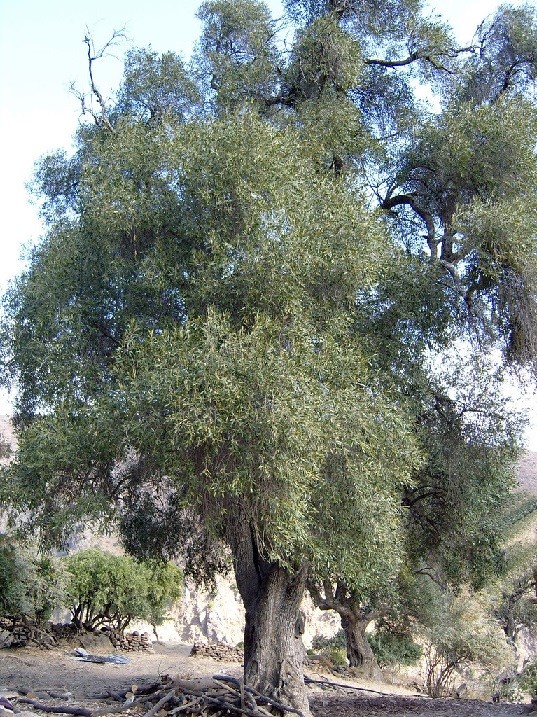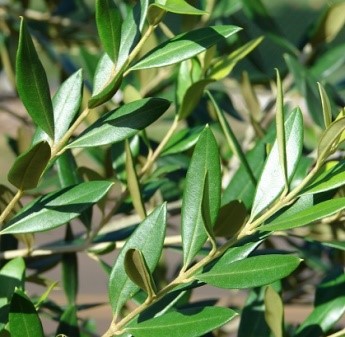Trees
Olea ferruginea Royle
Olea ferruginea Royle
Description :
A
small, evergreen tree 9 to 12 m tall with diameters of 0.3 to 0.6 m. The leaves
are simple, 3 to 10 cm long. The whitish, flowers are arranged in bunches. They
bloom between March and September. The fruit is a drupe 8 mm long, that mature
between May and December. It has no known insect or disease problems. It is
reproduced both from seed and by vegetative means the seeds should be planted
immediately after collection, as stored seed loses its viability rapidly. One
year old poly bag plants are suitable for field planting. It grows very slow.
MAI of 0.25 cm (dlam) is common. One year old coppice shoots are 0.25 to 0.90 m
tall. Trees with heights of 3.5 m and diameters of 3 cm in a six-year period
have been reported. Close, even grain. Sapwood is white, heartwood varies from
light brown to nearly black. With hard strength having specific gravity of
1.125.
Distribution :
The
tree is native to the subcontinent including Pakistan. Afghanistan, and India.
In Pakistan it is found on the lower hills of Azad Kashmir, Punjab, KP,
Balochistan and in the hills on the west side of the Indus in the Sindh. A
tolerant tree that grows on a variety of calcareous, loamy, to gravel sandy soils.
It is adapted to a precipitation zone of 250 to 1000 mm/yr. It prefers an arid
to semi-arid, cool-cold temperate, sub-humid semi-arid, cool warm sub-tropical
climate with a temperature range of -10 to 40°C at elevations from 500 to 2000
m. It coppices easily and is frost and drought resistant.
Uses :
This
is a good tree for reforestation projects in arid areas. It also has potential
as an oil and fruit tree. Attempts to graft better varieties could increase
both oil and fruit production. The wood is of value, and can be used for fuel,
while the foliage makes good fodder. Also used in construction, fuel, tool
handles, fodder, watershed protection, and fruit and oil.



